(This page contains affiliate links. If you purchase a material from one of the links, Habitot will receive a small commission at no extra cost to you.)
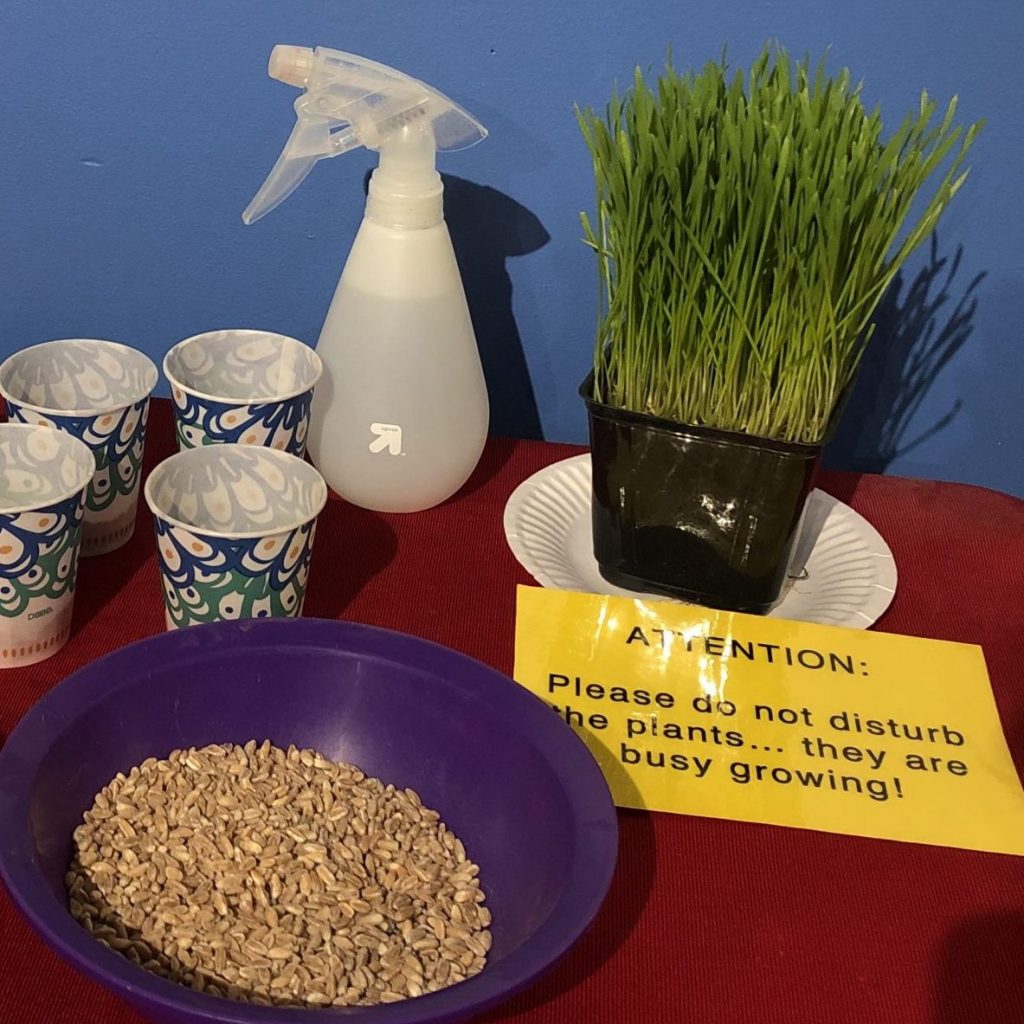
Happy Nowruz! Habitot has a long tradition of celebrating Nowruz or Persian New Year with a variety of activities. Nowruz (also spelled Norooz or Norouz) is an ancient holiday that’s been celebrated since at least 6 BCE. Over the course of thousands of years, it has spread to many countries in Asia and Europe, and more recently, around the world with the diaspora. Celebrated on the first day of spring, many of its traditions and symbols center around growth, rejuvenation, and new life. Each year through Habitot, families learn about Nowruz by planting and displaying sabzeh – lentil or wheatgrass sprouts. This week, we’re sharing how to grow wheatgrass in your own home!
What We’re Learning & Skills We’re Building
- Plant biology – learning about seeds and watching them sprout into plants
- Fine motor skills – developing small muscles in the hands for holding utensils
- Cause and effect – understanding that water and light cause seeds to sprout and plants to grow
- Appreciation of cultural traditions – learning about the different ways people celebrate spring
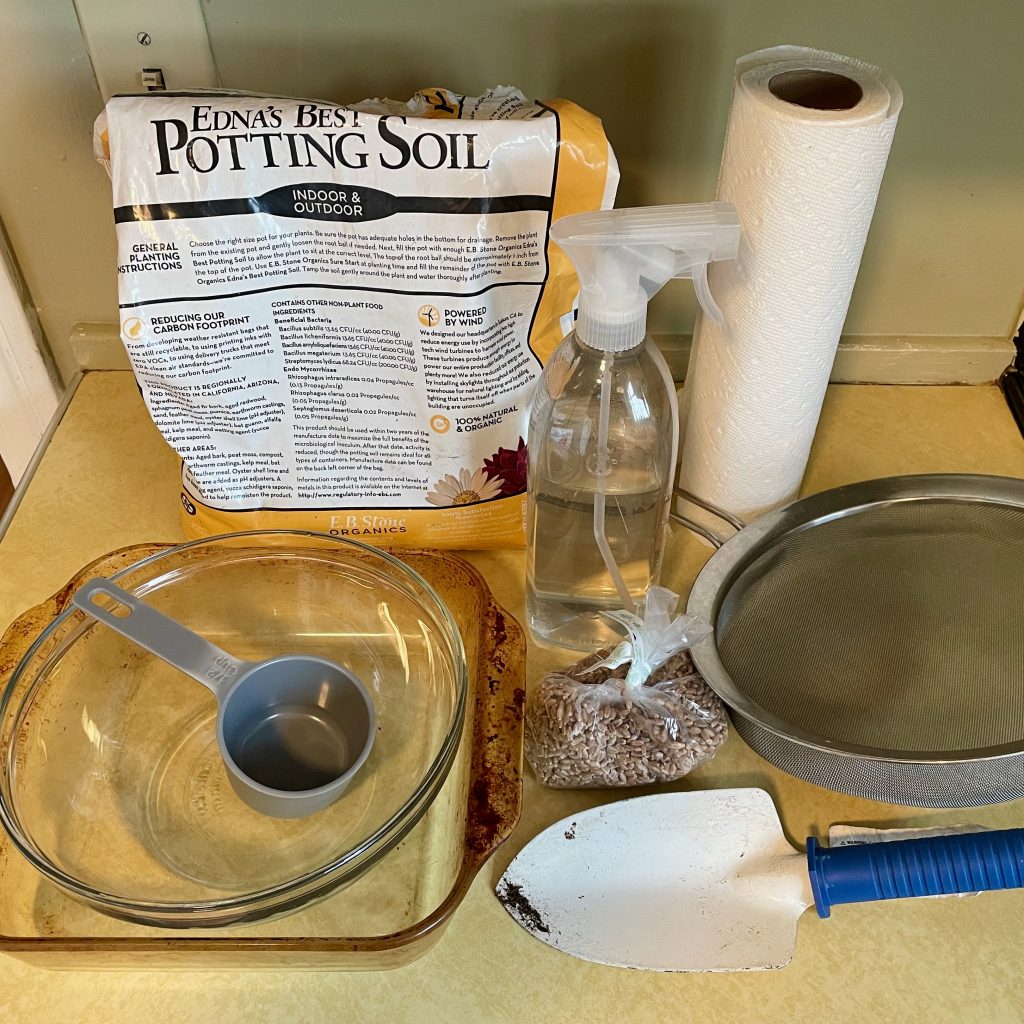
Materials
- Whole wheat berries (can be found in bulk sections of natural food stores)
- 1 quart (or larger) bowl or other container for soaking wheat berries
- Small shovel/trowel or measuring cup for scooping wheat berries and soil
- Mesh strainer
- Tray, dish, or planter pot(s) (3” or deeper is ideal)
- Potting soil
- Spray bottle
- Newspaper, paper towel, or dish towel
- Child-safe scissors for harvesting
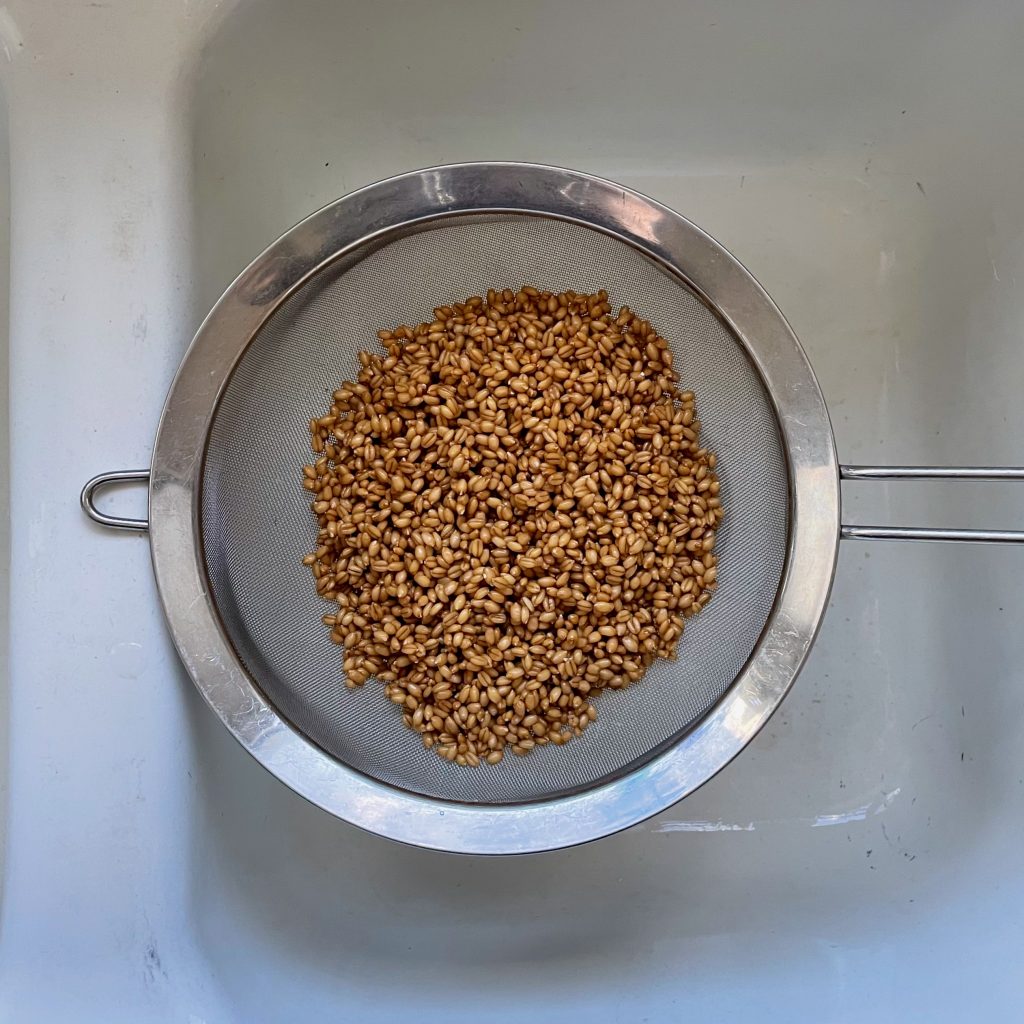
Prepping the Wheat Berries
1. Thoroughly clean the bowl or other container and fill it with cool water. Have your child use a small shovel/trowel or a measuring cup to scoop up 1 to 2 cups of wheat berries and pour them into the water. Wheat berries will expand by at least a half-cup after soaking in water.
2. Soak the wheat berries in the water for at least 12 hours (a full 24-48 hours of soaking is best). Ask, “What soaks wheat berries outside in nature?” (Answer: rain.) Soaking helps seeds sprout!
3. Drain the water using a mesh strainer. Observe the seeds closely. Ask, “Have they started to sprout?” Freshly sprouted seeds will have tiny white “tails” emerging from one end.
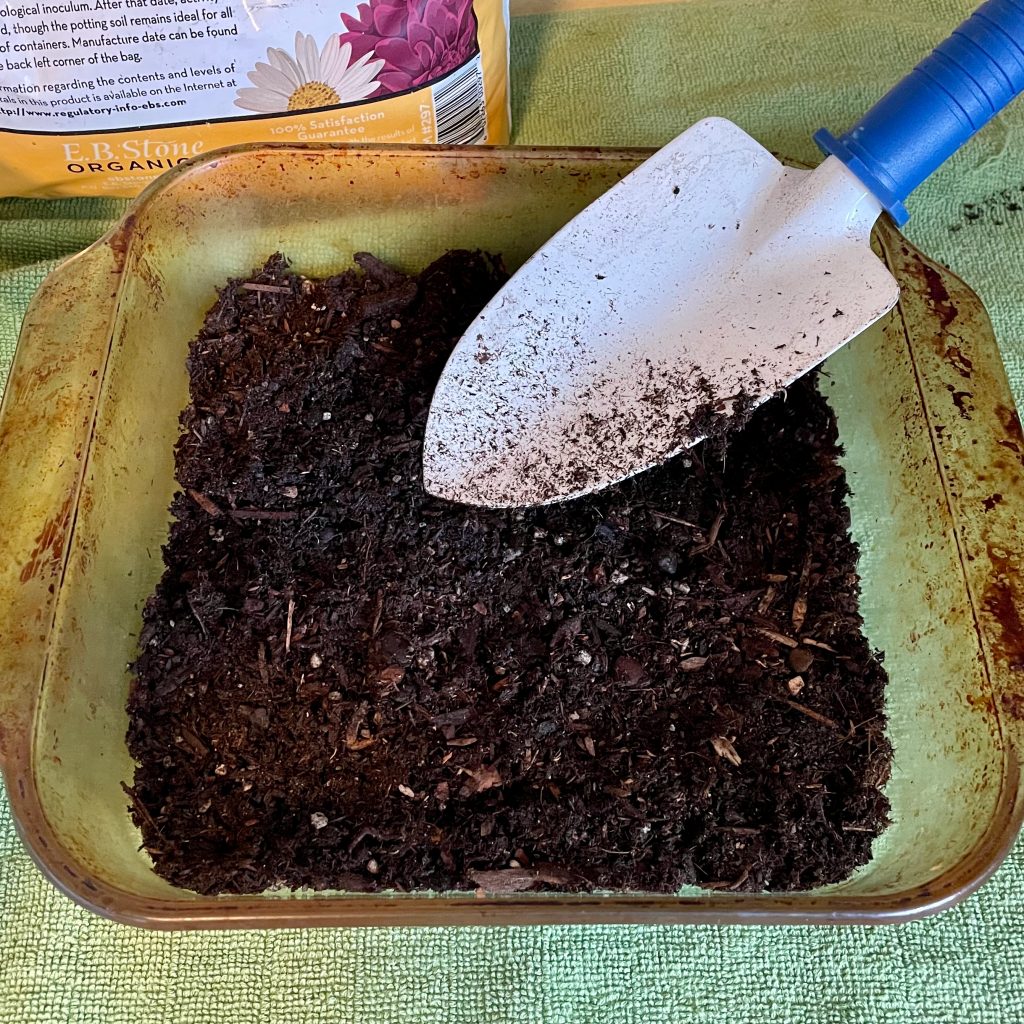
Planting and Growing
(Note: Wheatgrass for Nowruz is often grown in a decorative dish without soil. We’re growing ours in soil, but if you and your child don’t want to, skip steps 1 & 2 below.)
- Immediately after draining the seeds, your child can help you fill a tray, dish, or planter pot(s) with soil using a trowel or a measuring cup. Fill it so that there’s at least a 2-inch layer of soil.
- Have your child spray the soil with water so that it’s moist but not soaking.
- Help your child sprinkle an even layer of wet seeds onto the tray or dish, or into the planter pot(s) (if you’re using soil, sprinkle it over the top of the seeds).
- Cover the wet seeds with newspaper, a large paper towel, or a dish towel. Your child can give a misting over the top of the cover. Wheatgrass sprouts best in dark, moist environments.
- Place the container in indirect sunlight either indoors or, if it’s warm, outside.

6. The next day, uncover the container and mist the seeds, then cover them again. If you can, check the moisture level of the soil and seeds a few times each day. Your child can give them a light misting, if necessary.
7. Repeat this step every day until green sprouts start to emerge. Your seeds are growing! Once the green sprouts have fully emerged, stop covering the container.
8. Watch as beautiful green blades of wheatgrass keep growing in height every day!
Observations: Talk with your child about the changing seeds and wheatgrass (color, height, roots, etc). Use a ruler to measure the height of the wheatgrass every day. If you’re using a clear dish, you might be able to see long white roots growing down through the soil!
Harvesting
- Once the wheatgrass is about 8″ tall (usually around the 7th to 9th day of growing), it’s ready to harvest. Using child-safe scissors, show your child how to cut the grass about ½” above the surface of the soil.
- You can both try chewing on the wheatgrass, or you can blend it into a juice!
- A second round of wheatgrass will regrow in about a week with daily misting.
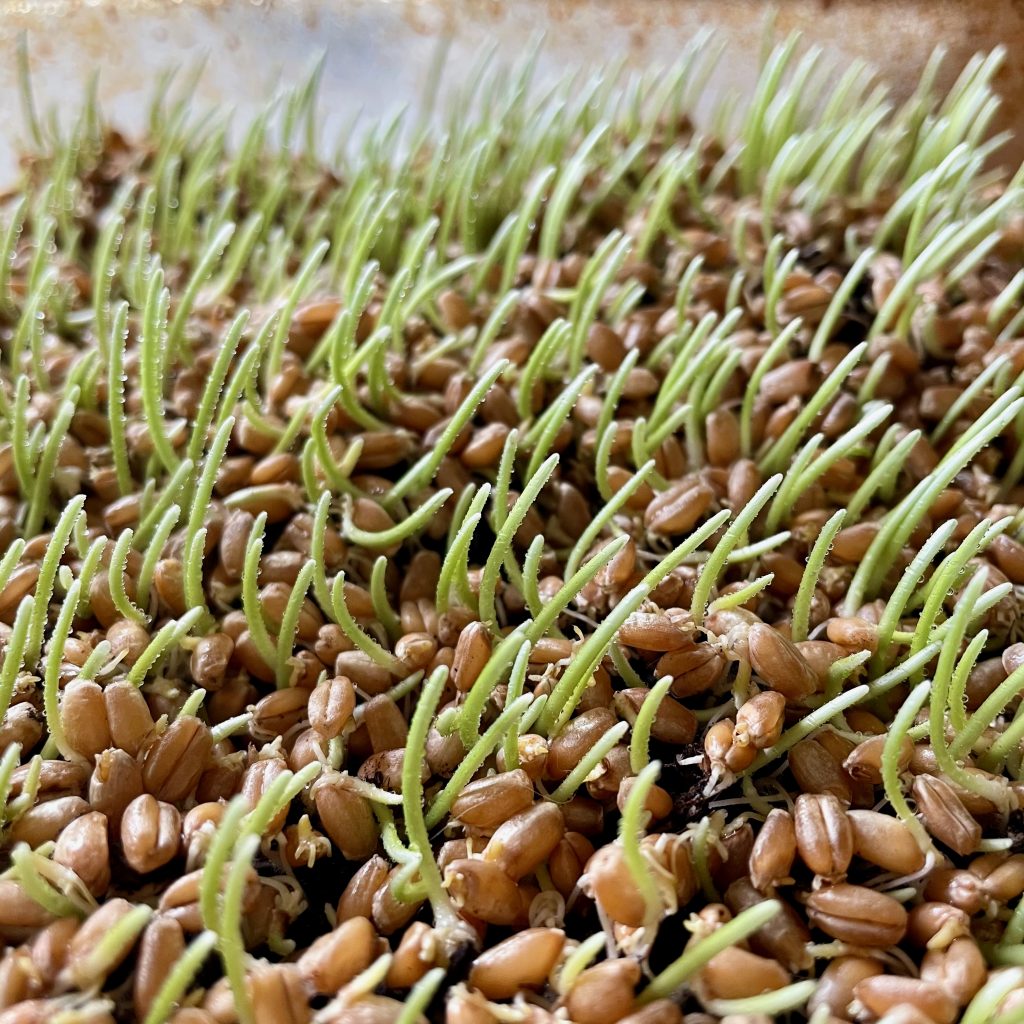
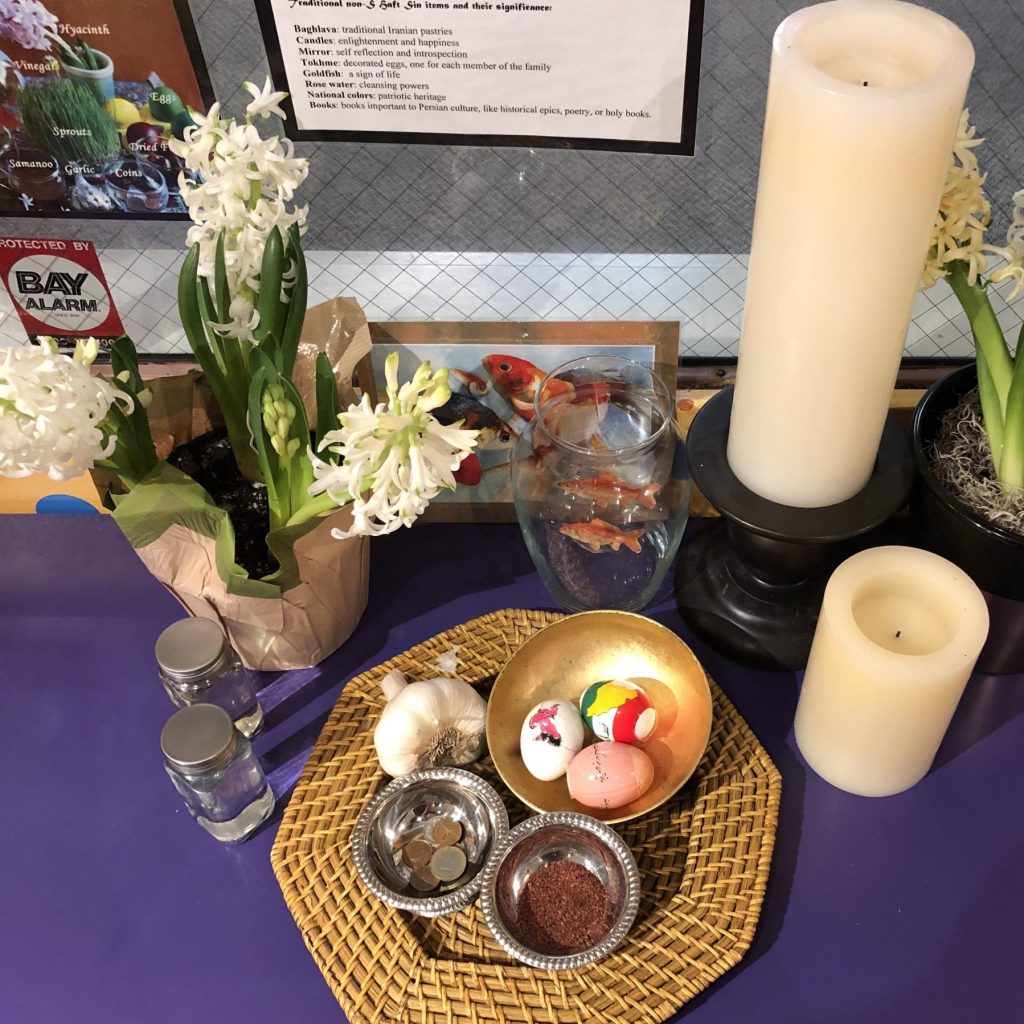
More About Nowruz
Nowruz is celebrated around the world by millions of families! There are many different traditions and activities, but one common tradition is setting up a haftseen, or a table where seven symbolic items are displayed. The placement of sabzeh on the haftseen can symbolize new life and the renewal of nature. Check out this video to learn more about Nowruz haftseen tables!
Colorful, decorated eggs are often a part of haftseen tables. In the Art Studio, families used to dye eggs during Habitot’s Nowruz celebrations. Here’s a really cool set of instructions for how to decorate eggs using natural dyes and materials.

